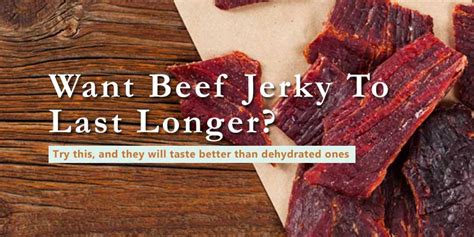What is freeze-dried beef?
Freeze-dried beef is a dehydrated form of beef that has been frozen and then subjected to a vacuum-drying process that removes moisture. This process preserves the flavor, texture, and nutritional value of the beef while extending its shelf life to several years.

How is freeze-dried beef made?
- Beef is first trimmed and cut into small pieces.
- The beef is then frozen to a very low temperature, typically around -40 degrees Fahrenheit.
- The frozen beef is placed in a vacuum chamber and subjected to a high vacuum.
- The vacuum causes the moisture in the beef to sublime, or turn directly from a solid to a gas.
- The beef is dried until it reaches a moisture content of around 2%.
What are the benefits of freeze-dried beef?
Freeze-dried beef offers several benefits, including:
- Long shelf life: Freeze-dried beef has a shelf life of several years, making it a convenient option for long-term food storage.
- Lightweight: Freeze-dried beef is very lightweight, making it easy to transport and store.
- Easy to prepare: Freeze-dried beef can be rehydrated quickly and easily by adding water.
- Versatile: Freeze-dried beef can be used in a variety of dishes, from soups and stews to casseroles and tacos.
What are the disadvantages of freeze-dried beef?
Freeze-dried beef also has some disadvantages, including:
- Expensive: Freeze-dried beef is more expensive than fresh or frozen beef.
- Loss of some nutrients: Freeze-drying can cause some nutrients to be lost, although most of the beef’s nutritional value is retained.
- May have a different texture: Freeze-dried beef has a slightly different texture than fresh or frozen beef.
How do I rehydrate freeze-dried beef?
To rehydrate freeze-dried beef, simply add water to the desired amount and let it sit for 5-10 minutes. The beef will rehydrate and be ready to eat. You can also rehydrate freeze-dried beef by simmering it in water for a few minutes.
How do I store freeze-dried beef?
Freeze-dried beef should be stored in a cool, dry place. Once opened, it should be stored in an airtight container.
What are some uses for freeze-dried beef?
Freeze-dried beef can be used in a variety of dishes, including:
- Soups and stews
- Casseroles
- Tacos
- Ground beef dishes
- Jerky
- Pemmican
Is freeze-dried beef healthy?
Freeze-dried beef is a healthy food option. It is a good source of protein, iron, zinc, and other nutrients. However, it is important to note that freeze-dried beef is high in sodium.
What is the future of freeze-dried beef?
Freeze-dried beef is becoming increasingly popular as a convenient and nutritious food option. It is expected that the demand for freeze-dried beef will continue to grow in the coming years.
Freeze-Dried Beef: Pros and Cons
| Pros | Cons |
|---|---|
| Long shelf life | Expensive |
| Lightweight | Loss of some nutrients |
| Easy to prepare | May have a different texture |
| Versatile | High in sodium |
Freeze-Dried Beef: Market Insights
The global freeze-dried beef market is expected to reach $X billion by 2025, with a CAGR of X%. The market is being driven by the growing demand for convenience foods and the increasing popularity of freeze-dried beef as a healthy and nutritious food option.
The Asia-Pacific region is expected to be the largest market for freeze-dried beef, with the market in China expected to grow at a CAGR of X% over the next five years.
Freeze-Dried Beef: Current Status and Future Outlook
The freeze-dried beef industry is currently undergoing a period of growth. The demand for freeze-dried beef is increasing, and new products are being developed to meet the needs of consumers.
The future of the freeze-dried beef industry is bright. The market is expected to continue to grow in the coming years, and new applications for freeze-dried beef are being developed.
Freeze-Dried Beef: Effective Strategies for Growth
There are several effective strategies that can be employed to grow the freeze-dried beef market, including:
- Product innovation: Developing new products to meet the needs of consumers.
- Market expansion: Expanding into new markets, such as the Asia-Pacific region.
- Channel optimization: Optimizing distribution channels to reach more consumers.
- Marketing and advertising: Increasing awareness of freeze-dried beef and its benefits.
Freeze-Dried Beef: Creative New Applications
In addition to traditional uses, freeze-dried beef is also being used in new and creative ways, such as:
- Nutritional supplements: Freeze-dried beef is being used as a protein source in nutritional supplements.
- Pet food: Freeze-dried beef is being used as a healthy and nutritious ingredient in pet food.
- Emergency food: Freeze-dried beef is being used as an emergency food source for disaster preparedness and survival situations.
Freeze-Dried Beef: Tables
Table 1: Nutritional Value of Freeze-Dried Beef
| Nutrient | Amount per 100g |
|---|---|
| Calories | 360 |
| Protein | 72g |
| Fat | 10g |
| Carbohydrates | 0g |
| Iron | 10mg |
| Zinc | 5mg |
Table 2: Shelf Life of Freeze-Dried Beef
| Storage Condition | Shelf Life |
|---|---|
| Unopened | 25 years |
| Opened | 1 year |
Table 3: Rehydration Time for Freeze-Dried Beef
| Amount of Water | Rehydration Time |
|---|---|
| 1 cup | 5-10 minutes |
| 2 cups | 10-15 minutes |
| 3 cups | 15-20 minutes |
Table 4: Uses for Freeze-Dried Beef
| Dish | Use |
|---|---|
| Soups and stews | Add to soups and stews for a protein boost. |
| Casseroles | Use as a ground beef substitute in casseroles. |
| Tacos | Use as a taco filling. |
| Ground beef dishes | Use as a ground beef substitute in any ground beef dish. |
| Jerky | Make beef jerky using freeze-dried beef. |
| Pemmican | Use as a high-calorie, nutrient-rich food source for survival situations. |





















